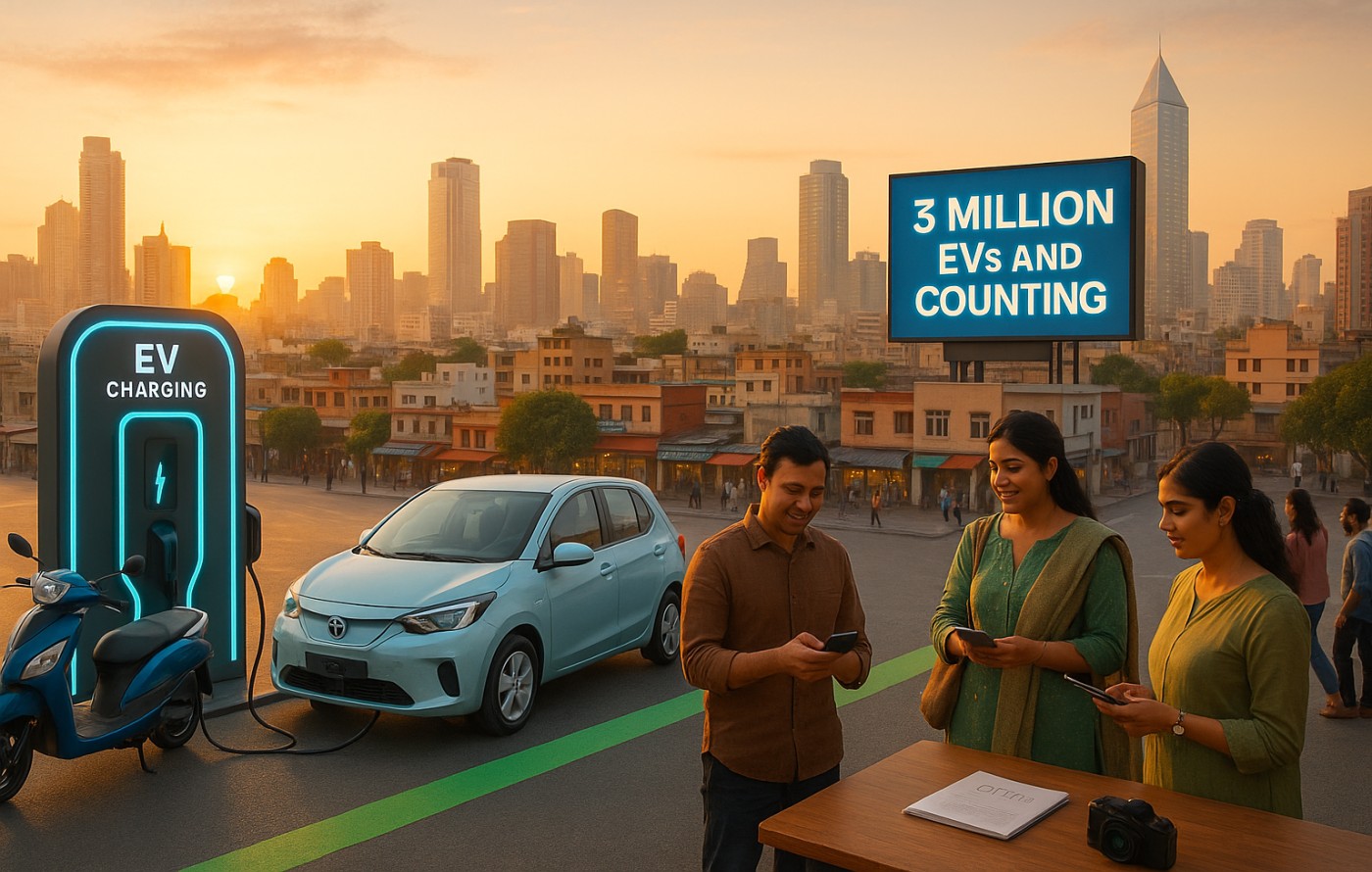
India Crosses 3 Million EVs: What This Means for Charging Infrastructure
- By SDC EV
India has officially crossed 3 million registered electric vehicles (EVs)—a milestone that not only signifies a shift in consumer behavior but also reflects a changing national mindset around clean mobility. From humble beginnings with e-rickshaws and scooters, India’s EV landscape now boasts electric cars, buses, and even commercial fleets entering mainstream mobility.
But with every new EV that hits the road, one question grows louder:
Is our charging infrastructure ready?
The Impressive Growth – And the Gap It Reveals
Crossing 3 million EVs is no small feat. The numbers have tripled in just three years thanks to:
Central and state government subsidies
Soaring fuel prices
Growing environmental awareness
Wider availability of EV models
However, India still has fewer than 10,000 operational public EV charging stations, according to official government data. That’s roughly one public charger for every 300 EVs, far below the global benchmark of 1:10 set by EV-leading nations like China and the Netherlands.
Why Charging Infrastructure Is Now the Critical Path
If India wants to sustain — let alone accelerate — this EV momentum, scaling up charging infrastructure is not optional. It’s essential.
1. Range Anxiety Is Still Real
For most new EV users, especially in smaller cities, the fear of running out of charge without a nearby station is a major barrier. More public and highway-side chargers will help ease that fear and boost confidence.
2. Urban vs Rural Divide
Most of India’s public chargers are concentrated in metros like Delhi, Mumbai, and Bengaluru. But Tier 2 and Tier 3 cities, where EV adoption is rising, remain underserved. Without decentralization, rural adoption will stall.
3. Two-Wheelers and Three-Wheelers Need Different Solutions
While fast chargers work for electric cars, smaller EVs need low-cost, slower but more accessible charging points, especially in dense urban areas. Fleets of e-rickshaws can’t wait in queues for hours.
What Needs to Be Done — Now
India’s EV dream hinges on fast-tracking the rollout of smart, scalable, and regionally adaptive charging networks. Here’s how that can happen:
✅ Public-Private Collaboration
Government alone cannot shoulder the infrastructure burden. Startups, real estate developers, fuel companies, and OEMs must co-invest in EV charging rollouts. PPP models should be encouraged and incentivized.
✅ Policy Reinforcement at State Level
Some states like Tamil Nadu, Maharashtra, and Delhi have robust EV policies, but others lag behind. States must align their policies with national targets and speed up land approvals, licensing, and utility support.
✅ Focus on Battery Swapping & Home Charging
Battery swapping for commercial EVs, and residential EV charging solutions for gated communities and apartments, will help cover the last-mile infrastructure gap.
✅ Incentives for Charging Operators
Operators and entrepreneurs installing public charging stations need viable business models. Reduced electricity tariffs, land grants, and income tax benefits can unlock large-scale investments.
What Happens If We Get This Right?
Cleaner Air in Cities: As more ICE vehicles go electric, cities will experience reduced emissions and noise pollution.
Job Creation: EV charging installation and maintenance could create lakhs of jobs in engineering, construction, software, and operations.
Boost to Renewable Energy: EV infrastructure can be aligned with solar-powered grids, making India’s green journey even more sustainable.
Energy Independence: Less reliance on oil imports and better energy management through smart grids and V2G (Vehicle-to-Grid) technology.
Final Thought: Hitting Milestones Is Great—But What Comes Next Matters More
The fact that over 3 million EVs are now zipping through Indian roads is a story worth celebrating. But if we don’t act fast to match this momentum with robust, reliable charging infrastructure, we risk turning this revolution into a short-lived trend.
Charging is the fuel of the future — and the future has already arrived.
So as we raise a toast to this milestone, it’s time to plug in — not just our vehicles, but our national will to power the change.
